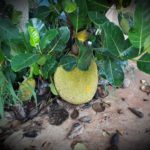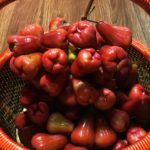Thailand Mangoes: Amazing Benefits, Varieties, and Uses
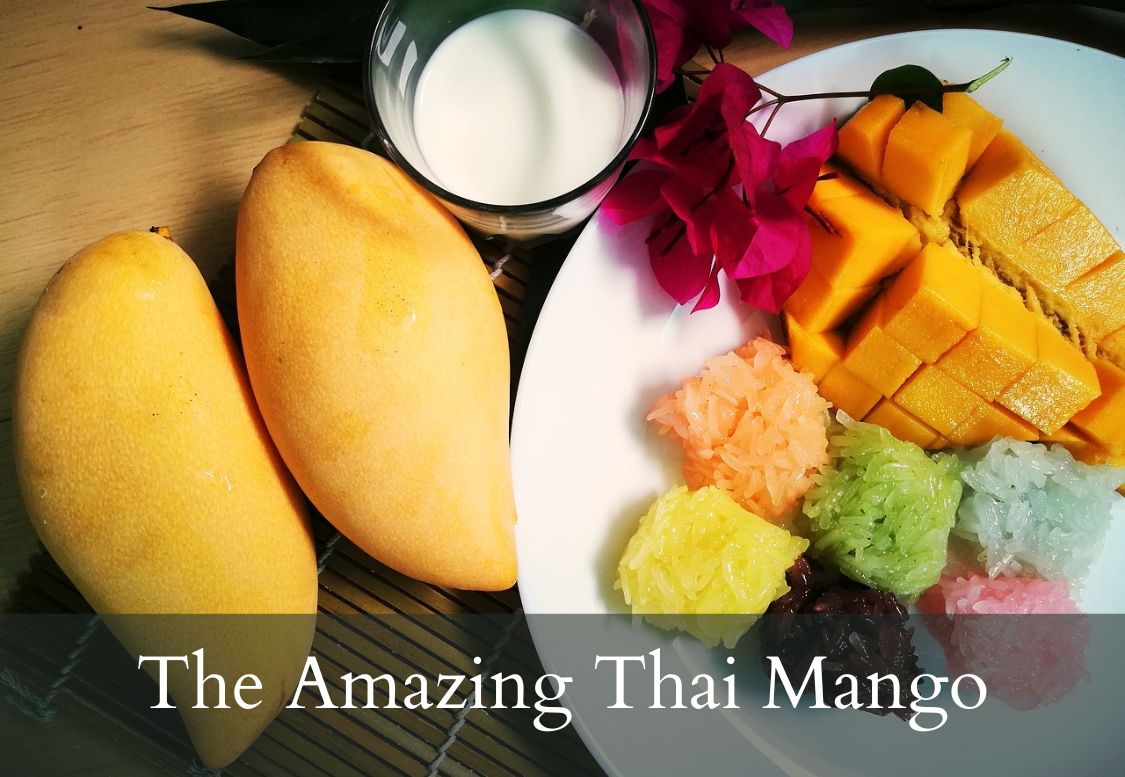
Back in the 1700s, during the reign of King Boromakot of Ayutthaya, Prince Dhammathibet wrote a poem honoring the Thai mango, which back then was referred to in Thai as “màak-mûang” (หมากม่วง) or “purple betel nut” — not to be confused with the betel nut that has been traditionally chewed as a stimulant (learn more in our post about betel nut chewing in Thailand).
The earliest written record of mangoes in Thailand goes back to the Sukhothai period of over 700 years ago, with a stone inscription that wonders at the many “màak-mûang” (mangoes) that are growing in the city.
These day, mangoes in Thailand are known as “má-mûang” (มะม่วง), and they come in many different varieties and colors — from green to reddish-orange to golden yellow. While wild mangoes, known as “má-mûang bpàa” (มะม่วงป่า) are native to Thailand, the popular garden mango seen sold at Thai markets and restaurants owes its origins to ancient India and is believed to be over 4000 years old.
Wild Thai mangoes and their uses aren’t discussed as much as their famous sisters, so let’s begin by diving into the benefits of this mango variety and how the tree is used by locals in Thailand.
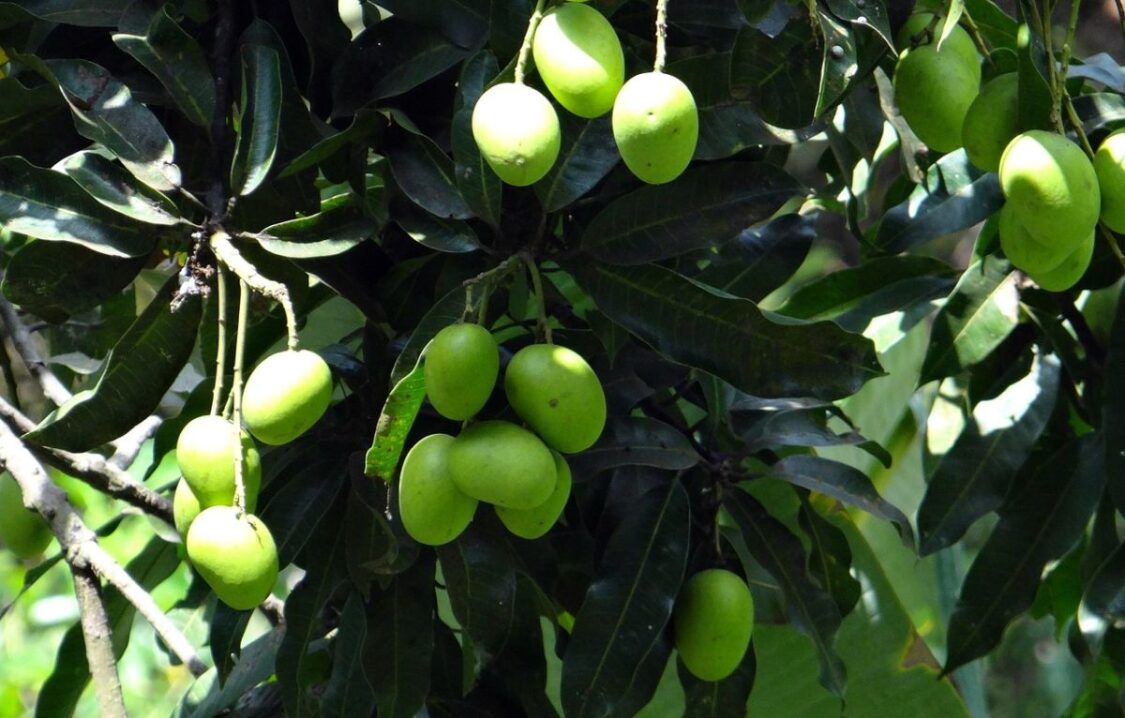
Wild Thai Mangoes: Uses & Benefits
1. Ripe wild mango fruit is greenish-yellow or yellow throughout, and rounder than most varieties of the garden mango. The skin is quite thin and the fruit has a sweet taste and a fragrant aroma. However, most people think garden mangoes taste better, which is why you don’t often see wild mangoes being sold at markets in Thailand.
2. Raw wild mango is crispy, sometimes more sour than sweet, and often eaten with chili and salt. It’s viewed as better for making pickled mangoes than garden mangoes, and is sometimes used to make wine or preserves.
3. Young wild mango shoots or young leaves are eaten fresh or eaten with chili paste. It has a slightly sour and astringent taste.
4. Wild mango wood is a hardwood, with an outer ring that’s slightly yellowish-brown and a center that has brownish-black spots. It’s traditionally been used by Thai builders to make house walls, frames, and ceiling boards, as well as furniture.
5. The Isaan people of Northeast Thailand use the wood from wild Thai mango trees to make charcoal to cook with and to stay warm during the cool season.
6. The bark of wild mango trees is sometimes boiled to create a light brown fabric dye.
7. According to Thai folk healers, the health benefits of eating wild Thai mango includes boosting immunity, delaying aging, and protection against cancer.
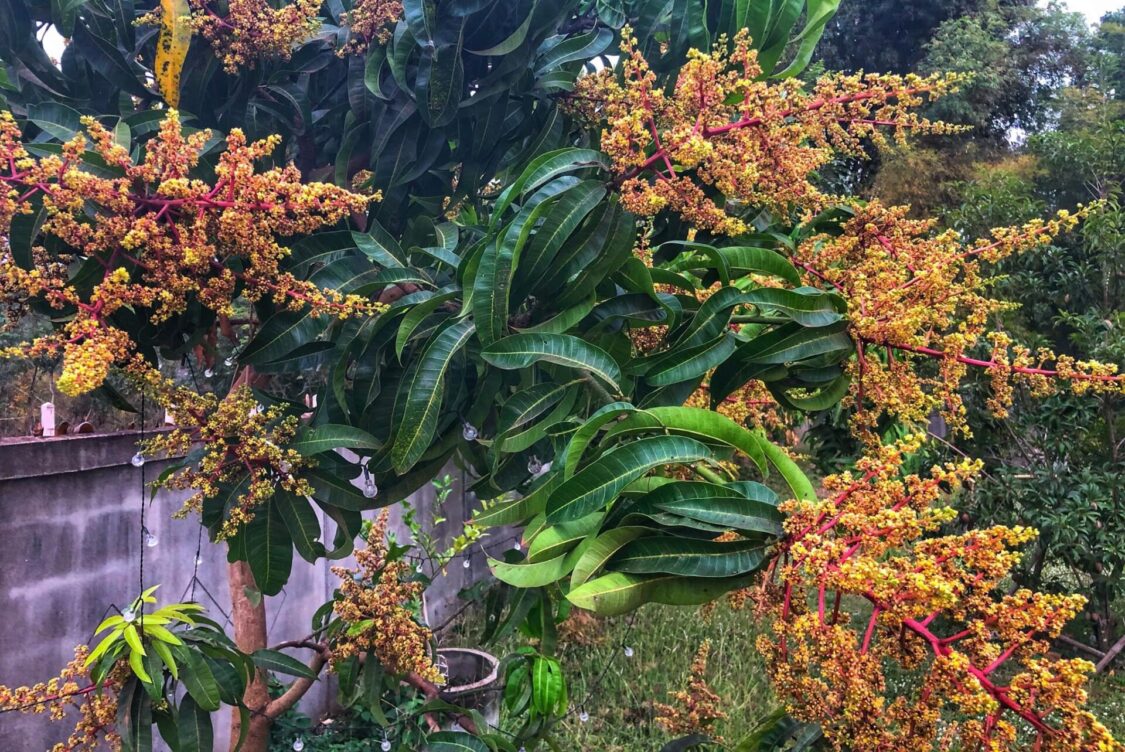
Garden Market Mangoes in Thailand
The famous Thai mango which owes its origin to India goes by the botanical name Mangifera indica Linn. As mentioned earlier, it’s been growing in Thailand for well over 700 years. It found welcome soil and climate conditions here, since the wild mango was already growing in the forests of the Kingdom. The tree has adapted so well that you can find mango varieties growing in every region of Thailand, from the northernmost point to the southernmost point, and even under the poorer soil conditions of Isaan.
Mango is a large tree. When fully grown, it may reach a height of 20 meters. The canopy is wide, dome-shaped or semi-circular. It has dense, dark green leaves. The bark is dark gray, rough, and becomes wrinkled as it ages.
Normally, mangoes bloom once a year in Thailand during the dry season and cool weather, but some mangoes can bloom all year long. Wild Thai mangoes generally bloom earlier, usually in December.
In India, mango is known as the King of Fruits. It’s arguably the most important fruit in Thailand, as well, especially when viewed from a culinary and cultural perspective. Mangoes when in season can be found sold at street intersections throughout Thailand, and mango sticky rice (topped with coconut milk) is considered one of the most delicious desserts in the world.
In addition, Thai fish are often fried crispy and served with a mango salad that is a favorite dish of many locals and tourists alike. Because mangoes come in so many different varieties with different sweet/sour taste profiles, chefs in Thailand use them in different delicious ways in their culinary creations.
Considering the mango’s popularity, you might think they are Thailand’s biggest fruit export. But that is not the case! Mangoes come in at Number 4, with the Top 3 fruit exports being durians (965,284 tons), longan (274,064 tons), mangosteen (245,049 tons). In comparison, Thailand exports only 104,154 tons of mangoes, just about 10% of the amount of durians that are shipped out each year.
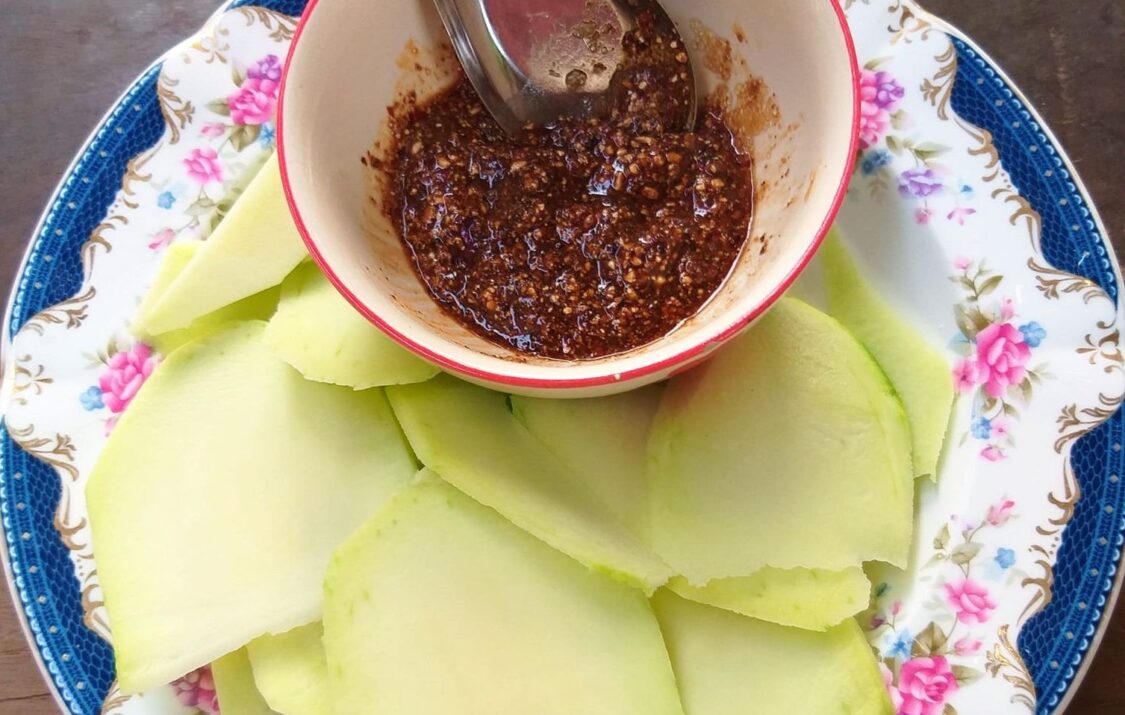
The Heath Benefits of Thailand Mangoes
Like wild mango, garden mango trees have many health benefits. In traditional Thai medicine, mango leaves are dried and ground into powder and used to treat diarrhea and diabetes. Fresh mango leaves also are used in a stew to treat gum disease. The flesh of mango seeds is said to remove roundworms, and the juice squeezed from mango seeds a cure for nosebleeds.
In addition, ripe mango fruit is believed to nourish energy. The flowers, bark, and seeds are used to treat diarrhea, dysentery, and vomiting. The dried leaves can be burned and the smoke inhaled to treat bronchial diseases. Lastly, the resin from the fruit and tree is mixed with orange juice or oil and applied to relieve itching and skin diseases.
Here is a breakdown of mango’s nutritional properties:
Mangoes are rich in phosphorus and calcium that help nourish bones and teeth, so they don’t become brittle and easily broken.
Mangoes contain vitamins B1, B2, and A, C, and E to help fight free radicals.
Mangoes contain potassium and copper to help the body work normally; flavonoids to help eliminate fat in the blood; and triterpenes to help fight prostate and skin cancer.
Mangoes contain the amino acid tryptophan that helps the body secrete hormones, and noserotonin to promote relaxation and sleep.
100 grams of Thai mango includes .5 grams of protein, .2 grams of fat, 15.7 grams of carbohydrates, and 2.4 grams of dietary fiber.
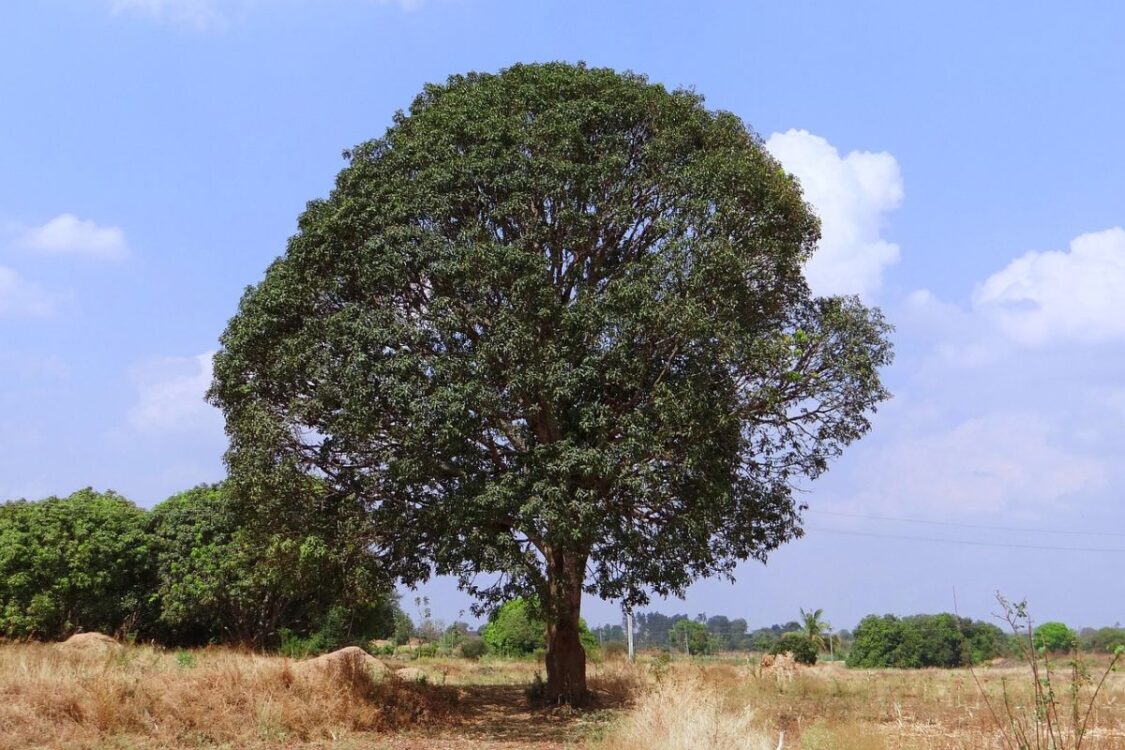
Mangoes in Thailand’s Buddhist & Hindu Culture
While Thailand is overwhelmingly a Buddhist country, the influence of the Hindu religion is seen everywhere at Thai temples, with sculptures of Hindu gods and mythological figures frequently appearing beside Buddhist iconography.
Hindus believe that mangoes originate from Mount Kailash, which is the residence of Lord Shiva. Moreover, some scriptures say that the mango is a part of Brahma (the creator god). Hindus therefore regard the mango as a sacred tree.
Many Buddhists in Thailand also consider the mango a sacred tree. This is because in Buddhism we have the story of the Lord Buddha performing the “Twin Miracle” (or Yamaka Patiharn) at the foot of a mango tree called Gandamapikkha near the town of Savatthi, India.
According to legend, the Buddha emitted flames from the upper part of his body and streams of water from the lower part, and then reversed the phenomenon, emitting water from the upper part of his body and flames from the lower part. This alternation of fire and water demonstrated the Buddha’s mastery over the elements. It was performed in front of a large audience, including followers of other sects who doubted his powers.
The purpose of this miracle at the foot of a mango tree was to inspire faith and confidence in those who witnessed it, and to demonstrate the Buddha’s spiritual prowess. The Twin Miracle is considered one of the most significant of the Buddha’s miracles and is celebrated during the Buddhist festival of Asalha Puja in Thailand, which commemorates the Buddha’s first sermon and the founding of the Buddhist community.
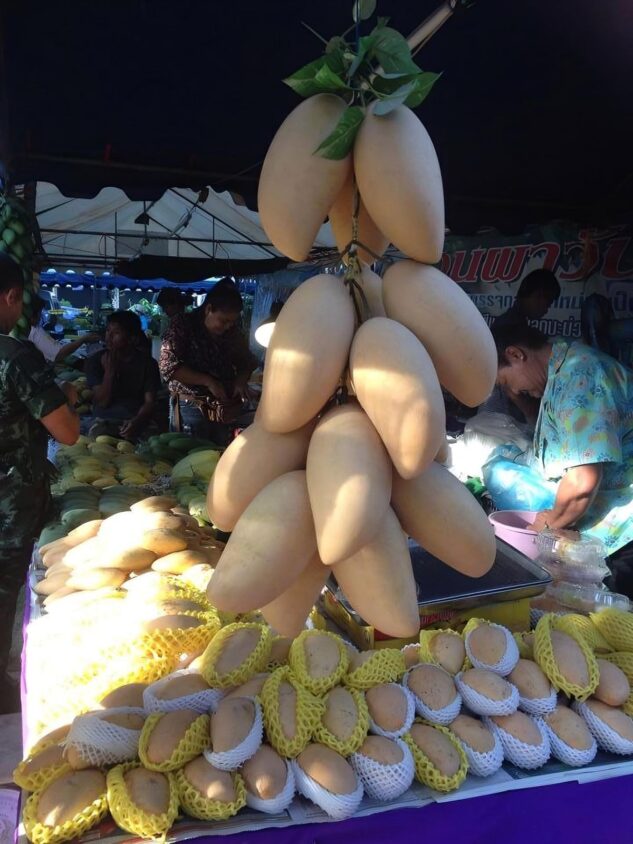
The Most Popular Varieties of Thai Mangoes
If you would like to go on a taste excursion of Thailand’s mangoes, here are the most popular varieties to try:
1. Nam Dok Mai (น้ำดอกไม้): This is one of Thailand’s most famous mango varieties, known for its elongated shape, bright yellow skin when ripe, and incredibly sweet, fragrant flesh. It’s often eaten fresh but also is popular in desserts like mango sticky rice.
2. Mahachanok (มหาชนก): An elongated mango with a curved tip, Mahachanok is known for its vibrant skin that transitions from green to a beautiful reddish-orange as it ripens. It has a sweet, slightly tangy flavor, with a firm, juicy texture. This variety is also eaten fresh and used in various sweet preparations.
3. Kiew Sa-wei (เขียวเสวย): These Thai mangoes are highly prized for their sweet, aromatic, and buttery flesh with minimal fibers. The skin remains green even when the fruit is ripe, making it a bit of a guessing game for those unfamiliar with this variety.
4. Ok Rong Thong (อกร่องทอง): This Thai mango is famous for its intense sweetness and strong, delightful aroma. It has a relatively round shape and a bright yellow skin when ripe. Ok Rong is another variety often enjoyed fresh or used in desserts.
5. Nam Dok Mai Si Thong (น้ำดอกไม้สีทอง): A variant of the Nam Dok Mai, this mango is known for its golden-yellow flesh, which is incredibly sweet and creamy. It’s a sought-after variety for both eating fresh and using in traditional Thai desserts. In Sakon Nakhon, there is a special mango farm that grows these mangoes which you can learn about here.
6. Rad Mango (มะม่วงแรด): Less known internationally but cherished locally, Rad mangoes have a smaller size and a more fibrous texture. They’re often eaten when green and tart, making them perfect for salads, like the famous Thai green mango salad.
7. Chok Anan (โชคอนันต์): Known for its unique aroma that some liken to coconut or vanilla, Chok Anan mangoes have a creamy, sweet, and slightly tart flavor. It can be eaten both when green and slightly sour or when yellow and fully sweet.
If you are going on a mango tour of Thailand, be sure to visit the Chachoengsao Mango Fair, which we’ve attended many times and is arguably the best Thai mango festival in the Kingdom.
Chachoengsao is located less than an hour from Bangkok on the lovely Bang Pakong River. The mango festival is held every year around late March and/or early April, and includes many different varieties of fresh mangoes, as well as delicious food products made from locally grown Thai mangoes. While there, you can also go visit the largest statue of Ganesha in Thailand!
- Affirmations in Buddhism & Thailand - June 7, 2025
- Speak Thai Naturally Without the Gymnastics - April 20, 2025
- The Best Learn Thai Podcast and YouTube Channel - April 10, 2025


